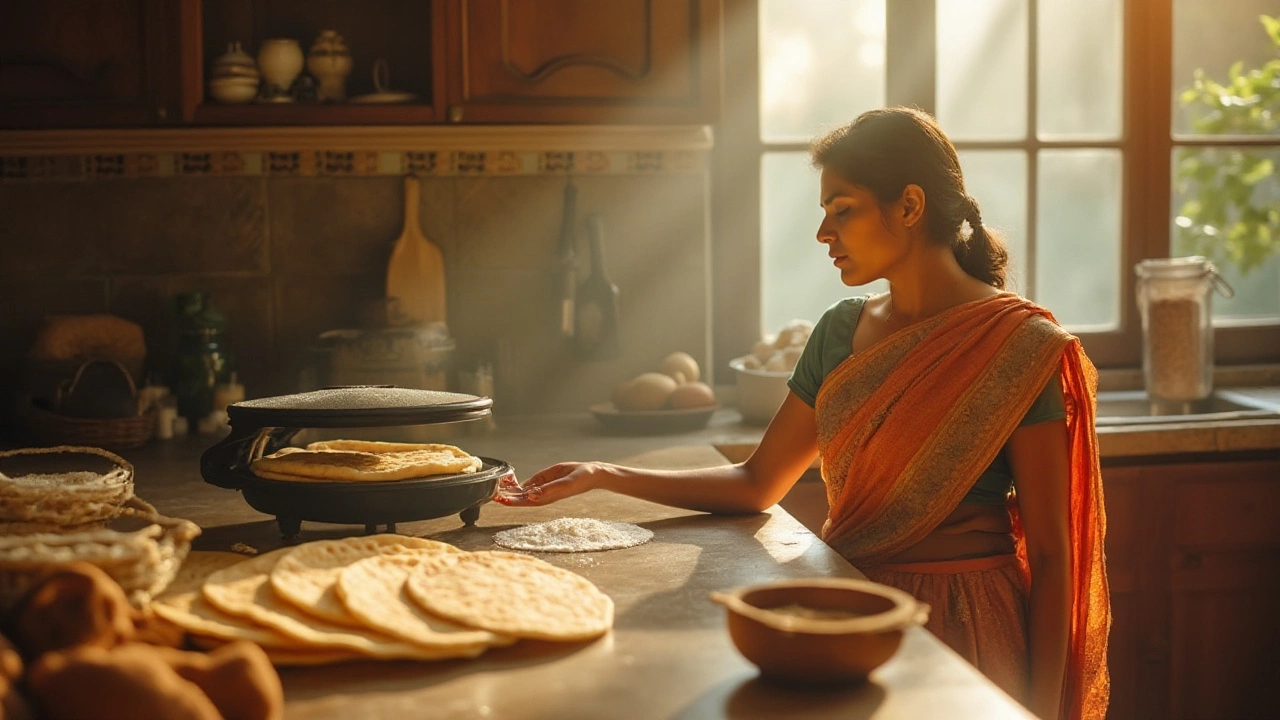Mastering Dough Consistency for Flawless Indian Breads
If your roti sticks to the rolling pin or your dosa cracks, the culprit is usually the dough consistency. Getting the right feel can turn a sticky mess into soft, fluffy rotis in minutes. Below are easy ways to check, adjust, and keep your dough just right, no matter if you’re making chapati, naan, or paratha.
How to Test Your Dough
The fastest test is the "ball test." Pinch a small piece of dough between your thumb and forefinger. It should form a smooth, pliable ball that doesn’t crack when you gently pull it apart. If it feels dry and crumbly, add a splash of water (1‑2 tsp at a time). If it’s sticky, sprinkle a little flour and knead until the surface feels non‑sticky but still soft.
Another trick is the "windowpane test." Roll a tiny piece into a thin sheet; if you can see light through without tearing, the gluten has developed properly. This is especially useful for whole‑wheat flour, which needs a bit more kneading.
Factors That Affect Consistency
Water temperature matters. Warm water (around 35‑40°C) speeds up gluten formation, giving a softer dough faster. Cold water slows the process, which can be handy on hot days when dough gets too soft quick.
Salt and oil also play roles. A pinch of salt strengthens gluten, while a teaspoon of oil or ghee makes the dough softer and easier to roll. Add these after the initial water‑flour mix so they distribute evenly.
Rest time is often overlooked. Letting dough rest for 15‑30 minutes covered with a damp cloth relaxes the gluten, making it less likely to snap back while you roll. For thicker breads like naan, a longer rest (up to an hour) improves puffiness.
Altitude can change water absorption. At higher elevations, you might need a little less water because flour dries out faster. Start with 5‑10% less water and adjust as needed.
Finally, the type of flour matters. Whole‑grain atta absorbs more water than refined flour. If you’re mixing the two, start with the water amount recommended for the finer flour and add extra in small increments.
Stick these simple checks and adjustments in your cooking routine and you’ll stop guessing. Your dough will feel just right, and the results—soft, pliable roti or crispy dosa—will speak for themselves.
Why Your Roti Turns Hard in a Roti Maker: Tips for Soft and Fluffy Results
Making roti in a roti maker can sometimes lead to unexpectedly hard results. Discover the common reasons why roti becomes hard and learn tips to keep them soft and fluffy. From adjusting dough consistency to perfecting cooking techniques, this guide offers practical solutions that can help you improve your roti-making skills.
